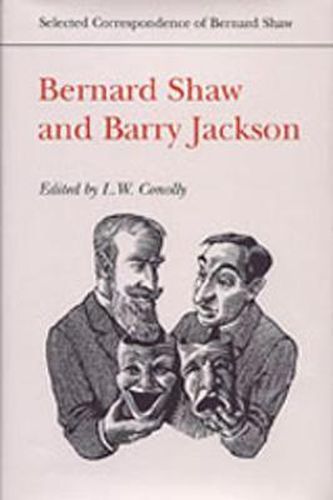Readings Newsletter
Become a Readings Member to make your shopping experience even easier.
Sign in or sign up for free!
You’re not far away from qualifying for FREE standard shipping within Australia
You’ve qualified for FREE standard shipping within Australia
The cart is loading…






Virtually ignored in histories of twentieth-century British theatre in favour of the more celebrated relationship of Bernard Shaw and Harley Granville Barker, the friendship of Bernard Shaw and Sir Barry Jackson is given prominence in this new book by L.W. Conolly. The collection of 183 letters, all but two of which are previously unpublished, sheds new light on a partnership that for Shaw was the most important of his later playwriting career, and for Jackson was central to his pioneering and acclaimed work in British regional theatre in both Birmingham and Stratford-upon-Avon.
Also included are letters from Shaw’s wife, Charlotte, and secretary, Blanche Patch, to Jackson. Headnotes with each letter set its context and provide a narrative of the continuing Shaw-Jackson relationship; further notations identify literary, historical, theatrical, and political references and allusions. Of interest to both the Shaw specialist and the drama generalist, this collection of letters represents a significant addition to modern understanding of Shaw and of British theatre.
$9.00 standard shipping within Australia
FREE standard shipping within Australia for orders over $100.00
Express & International shipping calculated at checkout
Virtually ignored in histories of twentieth-century British theatre in favour of the more celebrated relationship of Bernard Shaw and Harley Granville Barker, the friendship of Bernard Shaw and Sir Barry Jackson is given prominence in this new book by L.W. Conolly. The collection of 183 letters, all but two of which are previously unpublished, sheds new light on a partnership that for Shaw was the most important of his later playwriting career, and for Jackson was central to his pioneering and acclaimed work in British regional theatre in both Birmingham and Stratford-upon-Avon.
Also included are letters from Shaw’s wife, Charlotte, and secretary, Blanche Patch, to Jackson. Headnotes with each letter set its context and provide a narrative of the continuing Shaw-Jackson relationship; further notations identify literary, historical, theatrical, and political references and allusions. Of interest to both the Shaw specialist and the drama generalist, this collection of letters represents a significant addition to modern understanding of Shaw and of British theatre.